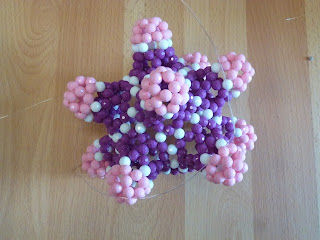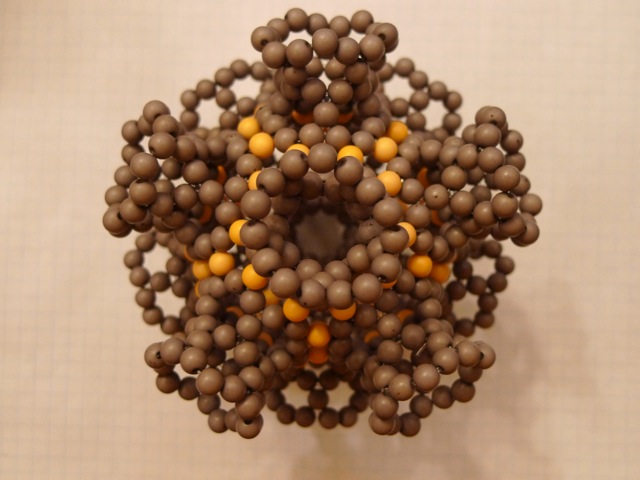Heptagons always generate a negative Gaussian curvature. For a cage-like fullerene, whenever we introduce an extra heptagon, we have to include a pentagon in order to satisfy the identity N5-N7=12.
One can replace a pentagon in a Goldberg icosahedron (icosahedral fullerene) by 6 pentagons (a hemisphere of C20) and 5 heptagons to get a spike. So the topological for this area is still 1 after replacement. Similarly, we can do the same replacement for all other 11 pentagons to get a dendritic structure.

Of course, we can use the same kind of trick to "grow" a spike (a carbon nanotube endcapped with the hemisphere of a C20) along the normal direction of any pentagon on any kind of graphitic structure.
Incidentally, this structure without the C20 caps is just the inner part of the high-genus fullerenes we have done before.

No comments:
Post a Comment